ISBN 978 963 9662 44 5, pp. xxi+353.
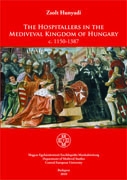
Zsolt Hunyadi, The Hospitallers in the Medieval Kingdom of Hungary, c.1150-1387. CEU Medievalia 13-METEM Books 70. Budapest: Central European Universtiy-METEM, 2010.
ISBN 978 963 9662 44 5, pp. xxi+353. 
List price: USD 35 / EUR 26 / GBP 23.99. 10% discount for the members of the SSCLE: USD 31.50, EUR 23.50, GBP 21.50
Order from CEU Press at http://www.ceupress.com/Order.html or from METEM via e-mail: heh@t-online.hu
"... The Order of Saint John had its headquarters in the East but its activities there depended for men, money and political support on its Western preceptories and priories but most of them relied on local materials without utilizing the Order's central archives, the remains of which are now on Malta. There have, more recently, been books on priories which did partly make use of the Malta documents. The work of Zsolt Hunyadi is a further addition both to the study of particular Hospitaller priories and to the history of the order as a whole. What presented the author with a major problem was the dramatic loss of archives and documents in Hungary, a difficulty which he laboured admirably to counter in Malta and elsewhere. In one way it is precisely because developments in the Hungarian priory were so different from those elsewhere that Hunyadis's work has such interest. The appearance of this thesis marks a major turning point in a subject which has hitherto been largely misunderstood. It is an excellent and much needed addition to Hospitaller history." - preface by Anthony Luttrell
***************************
Pierre-Vincent Claverie, L'ordre du Temple en Terre sainte et a Chypre au XIIIe siecle. Nicosie: Centre de Recherche Scientifique, 2005, 3 vols.
ISBN 978 9963 0 8094 6, pp. 1608. List price EUR 150/USD 225
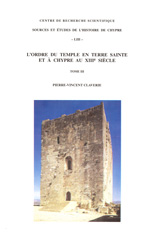
Offre spéciale pour les membres de la SSCLE 100 EUR au lieu de 150
Special offer for the members of the SSCLE EUR 100 instead of 150 (150 USD instead of 225)
Freight expenditures: to France: EUR 10,50, to Europe: EUR 26,50, to the USA: USD 52
Paiement par PayPal ou cheque accepté. Merci de passer commande aupres de pclaverie at ac-rennes.fr
Payment by PayPal or check accepted. Please, send your order by e-mail to pclaverie at ac-rennes.fr
Présentation/Présentation:
Ce coffret rassemble le texte intégral d'une these de doctorat soutenue a la Sorbonne en 2004 sur les activités des templiers en Orient apres 1187. L'ordre du Temple par sa dimension a la fois religieuse et militaire attira au cours du XIIIe siecle de nombreux lignages chevaleresques en quete d'aventures et de promotion sociale. Il affronta dans les années 1270 de nombreux revers militaires et politiques avant d'attirer la convoitise de Philippe le Bel au début du XIVe siecle. Les interrogatoires menés par l'Inquisition révelent l'orthodoxie de ses pratiques ainsi que sa popularité au sein de la société chypriote a la veille de sa disparition en 1312.
This set contains the text of a Ph.D thesis defended at the Sorbonne University in 2004. Like the Knights Hospitallers and the Teutonic Knights, The Templars were formed in 1120 to protect the Holy Land. By combining monastic privilege with chivalrous adventure, they attracted many nobles. The order, organized under a grand master and general chapter, had its headquarters in Acre during the major part of the thirteenth century. On the 13th of October 1307 came the arrest of all the Templars, the breaking of a storm conjured up by royal jealousy and greed, and organized by the French bureaucracy. The order was suppressed by Pope Clement V five years later despite its clear innocence, confirmed by the Processus Cypricus
***************************
Alan V. Murray, ed. The Clash of Cultures on the Medieval Baltic Frontier. Aldershot: Ashgate, 2009. Hardback. ISBN 9780754664833. List price 65 GBP
The
conversion of the lands on the southern and eastern shores of the
Baltic Sea by Germans, Danes and Swedes in the period from 1150 to 1400
represented the last great struggle between Christianity and paganism
on the European continent, but for the indigenous peoples of Finland,
Livonia, Prussia, Lithuania and Pomerania, it was also a period of
wider cultural conflict and transformation. Along with the Christian
faith came a new and foreign culture: the German and Scandinavian
languages of the crusaders and the Latin of their priests, new names
for places, superior military technology, and churches and
fortifications built of stone. For newly baptized populations, the
acceptance of Christianity encompassed major changes in the
organization and practice of political, religious and social life,
entailing the acceptance of government by alien elites, of new cultic
practices, and of new obligations such as taxes, tithes and military
service in the armies of the Christian rulers. At the same time, as the
Western conquerors carried their campaigns beyond pagan territory into
the principalities of north-western Russia, the Baltic Crusades also
developed into a struggle between Roman Catholicism and Orthodoxy.
This
collection of sixteen essays by both established and younger scholars
explores the theme of clash of cultures from a variety of perspectives,
discussing the nature and ideology of crusading in the medieval Baltic
region, the struggle between Catholicism and Orthodoxy, and the
cultural confrontation that accompanied the process of conversion, in
subjects as diverse as religious observation, political structures, the
practice of warfare, art and music, and perceptions of the landscape.
Contents
Members of the SSCLE are eligible for a discount price.
**************
Simon Phillips, The Prior of the Knights Hospitaller in Late Medieval England. Boydell Press, 2009. Hardback. ISBN 9781843834373. List price 95 USD/50 GBP
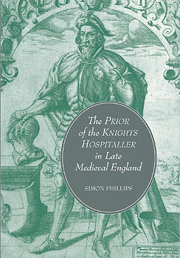 The
Prior of the Knights Hospitaller played a major role not only within
the Order, but also in the wider arena of English - and indeed European
- politics. This role, and its changes between 1272 and 1540, are the
focus of this new book, which draws extensively on archival material
both in the United Kingdom and in the Hospitaller archives at Malta. It
argues that the Prior's allegiance to the crown was as important as his
allegiance to his order, that the relationship between crown and priory
was generally cordial and that usually there was no contradiction
between service to crown and convent. It demonstrates a general
expansion in the public roles of the Hospitaller Prior, not just under
the most politically important Priors. It analyses the Priors'
interactions with financially important merchants and the terms that
three Priors served as treasurers of England. Finally, by revealing how
the order lost political control of its estates, it contributes to the
broader themes of secularisation and emerging nationalism.
The
Prior of the Knights Hospitaller played a major role not only within
the Order, but also in the wider arena of English - and indeed European
- politics. This role, and its changes between 1272 and 1540, are the
focus of this new book, which draws extensively on archival material
both in the United Kingdom and in the Hospitaller archives at Malta. It
argues that the Prior's allegiance to the crown was as important as his
allegiance to his order, that the relationship between crown and priory
was generally cordial and that usually there was no contradiction
between service to crown and convent. It demonstrates a general
expansion in the public roles of the Hospitaller Prior, not just under
the most politically important Priors. It analyses the Priors'
interactions with financially important merchants and the terms that
three Priors served as treasurers of England. Finally, by revealing how
the order lost political control of its estates, it contributes to the
broader themes of secularisation and emerging nationalism.
Author: Simon Phillips is a Research Fellow at the University of Winchester and Research Associate of the University of Cyprus.
Discount: Until 30 April, the Boydell Press are offering a 25% discount for the members of the SSCLE on direct orders with them, if customers quote the reference number at the bottom of the attached flyer.
**************
Projets de croisade (v. 1290-v. 1330), présentés et publiés par/edited by Jacques Paviot. Documents relatifs a l'Histoire des Croisades, tome XX, Édités par l'Académie des Inscriptions et Belles-Lettres, Paris, 2008, 416 pages.
| Il
était indispensable de rassembler les projets de croisade dus a des
auteurs ayant connu le Proche-Orient de la fin du XIIIe siecle et du
début du XIVe siecle : le franciscain Fidence de Padoue, les grands
maîtres de l'Hôpital Foulques de Villaret et du Temple Jacques de
Molay, du roi de Chypre Henri II, les auteurs anonymes du Via ad Terram
Sanctam, de la Devise des chemins de Babylone, du Memoria, auxquels a
été ajouté l'Hospitalier anglais Roger de Stanegrave, resté longtemps
prisonnier des Mamelouks. Ces auteurs nous offrent un regard aussi bien subjectif qu'objectif, de l'homme de religion autant que de l'homme de décision politique ou militaire, non seulement sur la fin de la Terre sainte franque, mais aussi sur l'État mamelouk conquérant : pour pouvoir faire la guerre, surtout celle de la < récupération > de Jérusalem, n'était-il pas nécessaire de bien connaître son ennemi ? |
One
had to publish together the projects for a crusade written by authors
who had lived in the Near East, from the end of the thirteenth century
to the beginning of the fourteenth century: the Franciscan Fidenzio of
Padua, the masters of the Hospital Fulk of Villaret and of the Temple
James of Molay, King Henry II of Cyprus, the anonymous authors of the
Via ad Terram Sanctam, of the Devise des chemins de Babylone, of the
Memoria, to whom has been added the English Hospitaller Roger of
Stanegrave, who had stayed for a long time in a Mamluk jail. A new
edition is provided for each of the texts, and Roger of Stanegrave's
Charboclois has been hitherto unpublished. These authors provide us with a subjective as well an objective view on the end of the Frankish Holy Land, and on the conquering Mamluk state: in order to wage war, above all that of the recovering of Jerusalem, was it not necessary to know well his enemy? |
Offre spéciale pour les membres de la Société pour l'étude des croisades et de l'Orient latin / Special offer for the Members of the Society for the Study of the Crusades and the Latin East: EUR 47,50 (au lieu de EUR 50)
**************
Conor Kostick, The Social Structure of the First Crusade. Brill: Leiden, 2008, Hardback (336 pp). ISBN 978 90 04 16665 3. List price EUR 99 / USD 154. The Medieval Mediterranean, 76.
The First Crusade (1096 - 1099) was an extraordinary undertaking.
Because the repercussions of that expedition have rippled on down the
centuries, there has been an enormous literature on the subject. Yet,
unlike so many other areas of medieval history, until now the First
Crusade has failed to attract the attention of historians interested in
social dynamics. This book is the first to examine the sociology of the
sources in order to provide a detailed analysis of the various social
classes which participated in the expedition and the tensions between
them. In doing so, it offers a fresh approach to the many debates
surrounding the subject of the First Crusade.
Readership: Those, in the main academics, with a special interest in the crusades, social theory and medieval social structure.
Author: Conor Kostick is an award-winning author of both history and
fiction. He holds a Ph.D. (2005) and gold medal in history from Trinity
College Dublin, where he teaches on the subject of the crusades.
Discount: (please mention the SSCLE for your discount). Brill has
agreed to offer a discount of 25% to all SSCLE members. This offer is
valid till 31 December 2008.
Order at http://www.brill.nl/default.aspx?partid=18&pid=27619
**************
Recent and forthcoming books on the Crusades and the Military Orders
Ashgate Publishing provides a special offer promotion (up to 30% discount) for the members of the SSCLE for several new and feature titles. For the details, see the flyers (offer20%, offer30%) compiled by Ashgate.
 |
 |
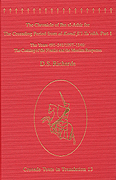 |
 |
 |
...![]()
![]()
![]()
![]() and several other titles.
and several other titles.
**************
Crusades and Military Orders at Brill
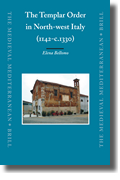 |
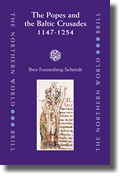 |
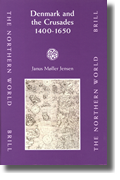 |
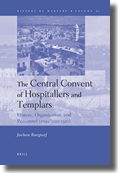 |
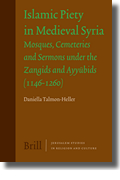 |
Jochen Burgtorf,
The Central Convent of Hospitallers and Templars History, Organization, and Personnel (1099/1120-1310)
F rom their humble beginnings in Jerusalem as a late eleventh-century
hospital and an early twelfth-century pilgrim escort, Hospitallers and
Templars evolved into international military religious orders, engaged
in numerous charitable, economic, and military pursuits. At the heart
of each of these communities, and in many ways a mirror of their growth
and adaptability, was a central convent led by several high officials
and headquartered first in Jerusalem (to 1187), then in Acre
(1191-1291), and then on Cyprus (since 1291), from where the
Hospitallers conquered Rhodes (1306-1310), and where fate in the form
of a heresy trial caught up with the Templars. The history,
organization, and personnel of these two central convents to 1310 are
the subject of this comparative study.
For further information, please, download the flyer of the book.
Elena Bellomo, The Templar Order in North-west Italy (1142-c.1330)
This book provides the first reconstruction of the Templar presence in
North-west Italy. Based on extensive archival searches, it gives
general insights into the development and organization of the Order in
this area, also examining the links between the Templar houses and the
Latin East and their involvement in the struggle between Papacy and
Empire. Recruitment, relations with lay and ecclesiastical institutions
and the activities of the Templar settlements are highlighted as
significant factors in shaping the particular development of the Order
in the region. The trial records also confirm the special nature of the
Temple's establishment in North-west Italy where the vicissitudes of
the Templars on trial were intertwined with local factionalism, and
positive relations with lay and ecclesiastical authorities continued
and in some places even defeated the charges leveled against the Order.
Iben Fonnesberg-Schmidt, The Popes and the Baltic Crusades 1147-1254
The Popes and the Baltic Crusades
examines the extension of the crusading idea from the Holy Land to the
Baltic region. Highlighting the interplay between canon law, missionary
ideas and politics, it shows how papal policy on the campaigns against
the pagan peoples of north-eastern Europe developed from Pope Eugenius
III's proclamation of a crusade against the Slavs in 1147 to the end of
Innocent IV's pontificate in 1254. It also discusses the interaction
between Rome and the princes and bishops of the Baltic region and
demonstrates how these local leaders influenced papal crusading policy.
The volume shows the variety of the crusading movement of the central
Middle Ages and offers a contribution to the ongoing debate about the
nature and definition of crusading.
Janus Moller Jensen, Denmark and the Crusades, 1400-1650
This first full-length study of the role of crusading in late-medieval
and early modern Denmark from about 1400 to 1650 offers new
perspectives to international crusade studies. The first part of the
book proves that crusading had a tremendous impact on political and
religious life in Scandinavia all through the Middle Ages. Danish kings
argued in the fifteenth century that they had their own northern
crusade frontier, which stretched across Scandinavia from Russia in the
east well into the North Atlantic and Greenland in the west. A series
of expeditions in the North Atlantic were considered to be crusades
aimed at re-conquering Greenland as a stepping stone towards India and
the realm of Prester John, which was argued to be originally Danish,
adding a much neglected corner to the expansion of Christendom in this
period. The second part shows that the impact of crusading continued
long after the Reformation ostensibly should have put an end to its
viability within Protestant Denmark.
Conor Kostick, The Social Structure of the First Crusade
The First Crusade (1096 - 1099) was an extraordinary undertaking.
Because the repercussions of that expedition have rippled on down the
centuries, there has been an enormous literature on the subject. Yet,
unlike so many other areas of medieval history, until now the First
Crusade has failed to attract the attention of historians interested in
social dynamics. This book is the first to examine the sociology of the
sources in order to provide a detailed analysis of the various social
classes which participated in the expedition and the tensions between
them. In doing so, it offers a fresh approach to the many debates
surrounding the subject of the First Crusade.
Daniella
Talmon-Heller, Islamic Piety in Medieval Syria: Mosques, Cemeteries and
Sermons under the Zangids and Ayyubids (1146-1260)
A study of religious thought and practice across a broad social
spectrum, but within a well-defined historical context, this book is an
interdisciplinary endeavor that incorporates the tools of philology,
social-history and historical-anthropology. Focusing on the mosques,
public assemblies, cemeteries and shrines of Syrian Muslims in the
period of the crusades and the anti-Frankish jihad, the book describes
and deciphers religious rites and experiences, liturgical calendars,
spiritual leadership, and perceptions of impiety and dissent. Working
from a perspective that breaks down the dichotomization of religion
into 'official' and 'popular,' it exposes the negotiation, construction
and dissemination of hybrid forms of religious life. The result is an
intimate and complex presentation of the texture of medieval Islamic
piety.
**************
The Festschrift for Anthony Luttrell is now available. The papers include studies on the Hospital in Jerusalem, relations with the Assassins, finances, indulgences, transportation and careers of the brothers and knights. Other contributions concern the later Middle Ages, both Rhodes and the European priories of the Hospital.
**************
Gary Dickson's book, The Children's Crusade, is expected to be out by November 16, 2007. For further information, see its flyer.
**************
Barbara Bombi's book on the conversion of the heathen in Livonia in the early 13th century has come out at the Istituto Storico Italiano per il Medio Evo: B. Bombi, Novella plantatio fidei. Missione e Crociata nel nord Europa tra la fine del XII e i primi decenni del XIII secolo, Roma 2007 (Nuovi studi storici, 74).
**************
From Simonetta Cerrini:
"Depuis dix ans de travail, j'ai pu livrer a la presse ce livre, qui garde la moitié de ma these de doctorat a la Sorbonne (Une expérience neuve au sein de la spiritualité médiévale: l'Ordre du Temple, 1120-1314. Etude et édition des regles latine et française) - avec le commentaire ponctuel a la regle et a la lettre de Hugues de Paiens, le fondateur de l'ordre -ainsi que les résultats des mes cours magistraux a l'université de Boulogne-sur-Mer et a l'université pontificale Antonianum de Rome. L'édition critique de la regle et l'édition critique de la lettre de Hugues va paraître, comme prévu, chez Brepols. L'édition italienne de la Regle (chez Mondadori) va paraître en 2008. (further information)
**************
Marco Meschini, Innocenzo III e il negotium pacis et fidei in Linguadoca tra il 1198 e il 1215. Accademia Nazionale dei Lincei Bardi Editore, Roma 2007 (Atti della Accademia Nazionale dei Lincei, anno CDIV [2007], Classe di Scienze Morali, Storiche e Filologiche, Memorie: Serie IX, Volume XX, Fascicolo 2), pp. 542.
**************
Stabilimenta Rhodiorum militum -- Die Statuten des Johanniterordens von 1489/93
Der geistliche Ritterorden der Johanniter verfügte im späteren Mittelalter über Häuser im gesamten lateinischen Europa. Der Unterhalt des Haupthauses auf Rhodos und die Erfüllung der Stiftungsaufgaben machten ständig neue Regelungen erforderlich, wodurch die interne Gesetzgebung immer unübersichtlicher und teilweise widersprüchlich wurde. So kam es zu einer Statutenrevision, die 1489/93 ihren Abschluss fand. Der revidierte Text wird hier erstmals in einer kritischen Edition zugänglich gemacht, die auch die ältere Überlieferung berücksichtigt. Die Stabilimenta Rhodiorum militum erlauben Einblicke in die Kommunikationsformen und die Ausgleichsmechanismen zwischen lokalen, regionalen und >nationalen< Interessengruppen in einer >internationalen< geistlichen Korporation.